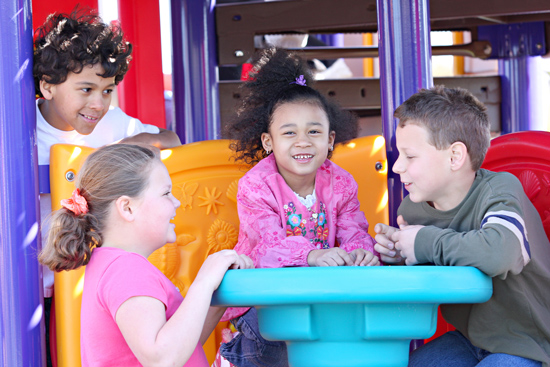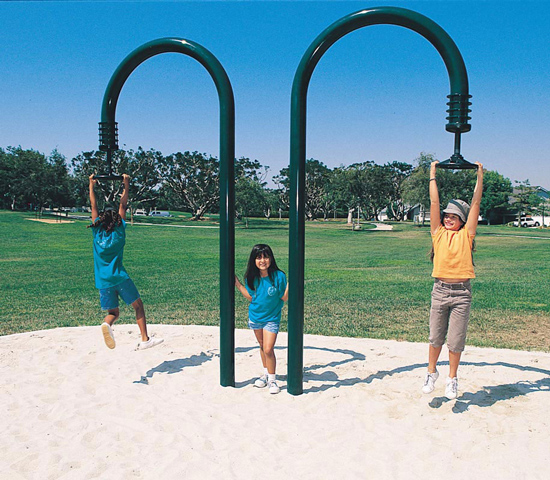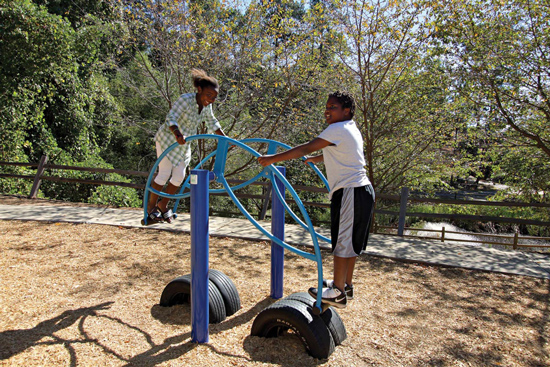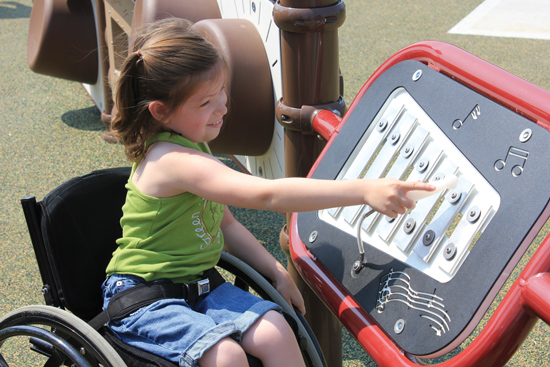How to Design Playgrounds for Optimal Sensory Development
The Benefits of Sensory Play and Inclusive Playgrounds
Much of the modern world focuses primarily on visual input, such as from television, smart phones, computer screens, and whiteboards. This can be a problem because while the visual sense becomes highly developed, the other senses remain underdeveloped. Sensory play allows all senses to become developed, and inclusive playgrounds promote that development for all children.
What Is Sensory Play?
Sensory play, such as what occurs in playgrounds all over the world, engages multiple senses in a creative way, with a particular focus on touch, proprioception, and the vestibular sense. Further, such sensory play can relieve feelings of stress and boredom, connect people in a positive way, stimulate creative thinking and exploration, regulate emotions, and boost egos. While sensory play looks like simple fun, it can actually be essential to a child’s development and thus to his or her success as an adult.
“The good news is that children are naturally driven to engage their core sensory systems,” says Dr. Zoe Mailloux, OTD, OTR/L, FAOTA.
Sensory play contributes in important ways to brain development. Think of it as “food for the brain.” A lot of learning can occur while children are doing what they do best: playing and exploring.
It is here that informed landscape architects and other designers have the power to create environments where the child is engaged and developed.
What Is Inclusive Play?
Making inclusive play possible becomes a critical factor in playground design because children with sensory integration challenges, such as those diagnosed with autism, learn best with peer role models. Opportunities for pretend play, taking turns, and conversation drive their development forward, especially for facing challenges in social situations. Those who design and specify layouts and equipment for playground environments can provide opportunities for children of all abilities to play and develop together.
Consider the following benefits of sensory play:iv
Cognitive development: Even before children can speak, they begin developing an understanding of their environment by actively exploring with all of their senses. As they become more verbal, they are able to describe similarities and differences in what they see, hear, taste, touch, and smell. Trips to a well-designed playground stimulate multiple senses in children that send signals to their brains, helping to strengthen neural pathways upon which all types of learning rely. In short, interaction with a thoughtfully designed playground improves children’s abilities to learn.
Social skills: Playing together allows children to observe how others play and to try out the ideas of others. Sensory play encourages children to share their own ideas and discoveries, and to build relationships. Vital relationship skills, such as sharing and taking turns, are introduced and practiced.

Playground equipment can actually encourage social interaction, which helps children develop social skills.
Sense of self: As they directly experience things for themselves, children explore and communicate preferences, creating an understanding of the world around them. Likes and dislikes are formed. Children learn to express feelings and emotions in a way that others can understand. By creating a safe place for children to express feelings, play encourages children to learn more about themselves, and to form a picture of who they are.
Physical skills: Children develop and strengthen motor skills through activities like running, jumping, climbing, swinging, sliding, scooping, pulling, pushing, and turning. Such actions support the development of small and large muscles. Additionally, these activities send necessary feedback to the brain about joint pressure, force, and exertion. Through play, children not only learn to use muscles, but also how to plan, coordinate, and create new movements.

Through physical outdoor play, children learn to use muscles and to plan, coordinate, and create new movements.
Emotional development: Sensory experiences can be very calming for some children and can help them work through troubling emotions, such as anxiety or frustration. Working with equipment that requires applying pressure or experiencing the sensation of swinging or rocking can help children release physical energy or tension.
Communication skills: Sensory play encourages children to use descriptive and expressive language, and allows them to determine and discover the meaning behind words and terms. Playing also allows children to develop communication skills by learning to hold conversations, express feelings, and hear feedback from others.
The Senses on the Playground
Thoughtfully designed sensory-enriching playgrounds can be transformative for all children, especially those with special needs. The playground can be an important factor in their ability to socialize and play among their peers. On an inclusive playground, all children find themselves integrated easily with other children, playing and relating naturally. However, if the playground proves to be a frightening or overwhelming experience, some children are likely to feel afraid, left out, and alone. A well-constructed, sensory-supportive playground allows children, especially those with sensory issues, to engage in the sensory experiences they need in socially acceptable ways. The selection of playground equipment, its location within the playground, and a thoughtful approach to the play area itself are vital elements in developing a sensory-friendly playground.
The Sense of Touch (Tactile Sense)
Children develop their sense of touch by manipulating objects and experiencing different surfaces and pressures.
- Foster a child’s interest in touch with play features, such as sand and water tables and rough-surfaced climbing rocks.
- Vary the textures of playground equipment, shapes, and objects to meet the need for tactile feedback.
- Provide interactive play panels or loose natural materials that children can manipulate and move with their hands.
The Body Position Sense (Proprioception)
Proprioception allows children to use their bodies in appropriate, successful, and skillful ways. Are they seated correctly on the swing? Are they about to fall, or are they stable? Did they get too close or too far away from their friends? Activities which provide the sensation of stretching, pushing, or pulling on muscles and joints activate the sense of proprioception.
- Consider play equipment that involves activities such as jumping, pushing, pulling, and hanging to nourish the development of proprioception.
- Include swings, teeter-totters, and overhead ladders to support proprioceptive development.
The Sense of Balance and Movement (The Vestibular Sense)
The vestibular sense offers information about balance, equilibrium, and spatial relationships. It helps children learn whether they are upside down or upright; whether they might be swinging or climbing too high.
- Include play equipment and activities that ask children to move in a rotary way, to balance, to spin, or to rock. All of these are ideal for supporting vestibular development.
- Prioritize play equipment that emphasizes child-activated movement for propulsion versus passive movement generated by an adult, as self-directed action helps to develop this sense, as well as a sense of competency and success.
- Include play equipment that involves coordination of both sides of the body (bilateral movement), such as a climbing wall or a horizontal crawl tube. Using both sides of the body in a coordinated way is integral to vestibular development.

Playground equipment helps children develop their sense of balance.
Sight and Sound
Visual and auditory also play a key role in early childhood development, so having a varied environment in which to play helps to foster sensory integration in all areas.
- Incorporate the use of brightly colored playground equipment or safety surfacing with various patterns to engage children visually and to make the playground an attractive centerpiece for any park or community.
- Add elements that allow children to experiment with and generate a wide variety of sounds and rhythms. Children will be delighted by the opportunity to make music on the playground, with elements such as chimes and drums.

For best results, position play panels in locations on the playground that are accessible to all children.









